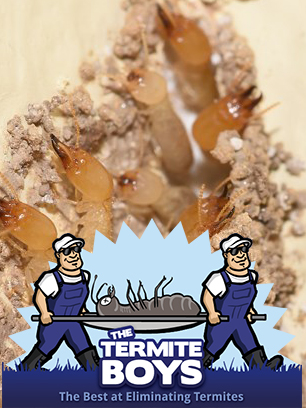Most people do not know how long insects have been on the planet, and few would believe that insects have been inhabiting earth for nearly one half of a billion years. Most experts believe that insects have been around for 400 million years, which, believe it or not, was before the supercontinent known as Pangea even existed. Most insects that existed on earth before Pangea broke apart have become extinct. Despite this, some of the most well-known insect groups that exist today were also around before the breakup of Pangea 200 million years ago. These insects include cockroaches, beetles, flies, termites and many more. Termites came into existence shortly before or during the breakup of Pangea, which also means that termites shared the world with dinosaurs. A recent study has found that one dinosaur genus regularly fed on ancient termites.
Given the popularity of the Jurassic Park film series, everyone knows that some dinosaurs possessed short and scrawny arms in spite of their large body size. These short-armed dinosaurs are known as theropods. Recently, archeologists unearthed a fossilized dinosaur specimen that possessed arms that were tiny even for theropods. This theropod dinosaur belongs to a group known as Alvarezsaurids, which were long-legged dinosaurs with tiny nub-like arms. Until the recent study was conducted, the tiny arms possessed by Alvarezsaurid dinosaurs confused researchers, as they did not think that such tiny arms could serve any useful purpose. However, the new unearthed Alvarezsaurid dinosaur, which has been named Albertonykus borealis, has arms that are outfitted with talons. This finding has led researchers to hypothesize that Albertonykus borealis used these talons to break open termite mounds. The claws look similar to the claws that modern anteaters and pangolins possess, and these animals use their claws to rip open durable termite mounds in order to feast. In order to test this hypothesis, researchers excavated soil in a region where Albertonykus borealis once inhabited. During the excavation, researchers failed to locate fossilized termite mounds, indicating that mound-building termites probably did not inhabit the region. However, the researchers did find fossilized remnants of tree-infesting termites. The Albertonykus borealis arms are too small to have been used for ripping apart trees, but the dinosaur most likely slurped termites out of dead rotting wood located on the forest floor. Several fossilized pieces of timber that were found at the site had sustained termite damage. Based on these findings it is likely that Albertonykus borealis kept a diet at least partially comprised of termites.
If the Albertonykus borealis did not use its talons for breaking open termite mounds, do you think that there is little remaining evidence to support the hypothesis that these dinos consumed termites?

